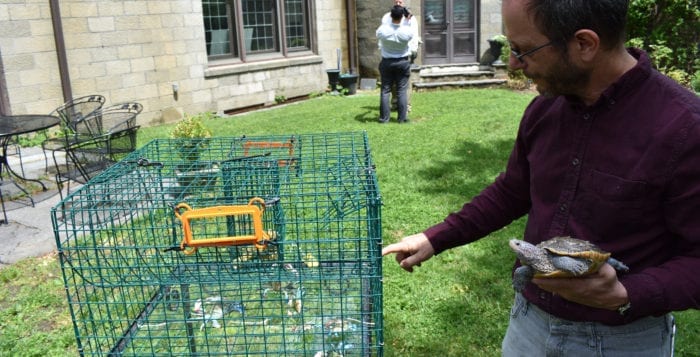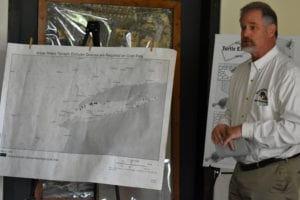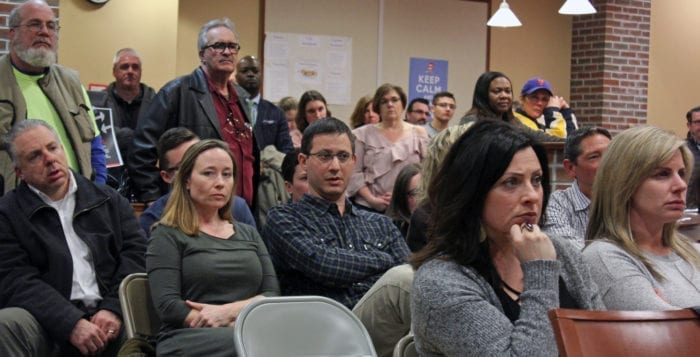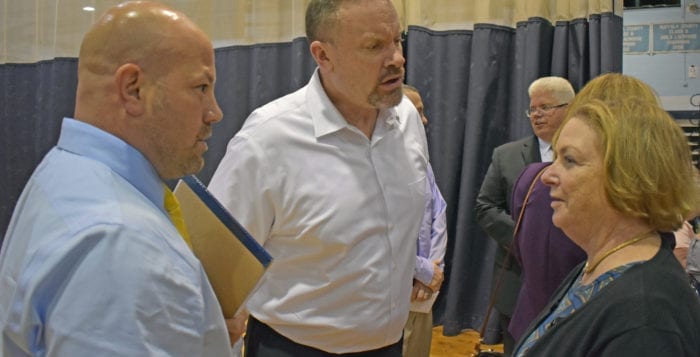By Kyle Barr
Shoreham’s Wardenclyffe property, the site of famed Serbian-American inventor Nikola Tesla’s last living laboratory, is up for consideration for historical site status by the New York State Historic Preservation Office June 7.
“We want to make the world aware, more than it is now, of the site’s importance,” said Jane Alcorn, president of the board of directors of Tesla Science Center at Wardenclyffe. “It gives the community and our investors some assurance that we’re moving in the right direction, that were not just gaining local recognition, but state and national as well.”

In 2012 the science center worked with The Oatmeal comic website to launch a successful Indiegogo campaign that raised $1.37 million to purchase the land. Since then the nonprofit has renovated the property with plans to turn the site into a museum and incubator for technology-based business startups.
Alcorn said the board hired a historic architect consultant who documented the land and its legacy. The group worked for months crafting a 92-page document describing Tesla’s life along with the many minute details of the 16-acre property, such as which buildings are historic and which are not, when each was built, and by what person and company.
Marc Alessi, the science center’s executive director, said that having the property on the historic register would help to indefinitely safeguard the land.
“It’s preserving it for future generations,” Alessi said. “When you get something registered as a historic landmark, we’ll be able to rest easy knowing 500 years from now if society completely changes, there is a very good chance the lab will still be there.”
“When you get something registered as a historic landmark, we’ll be able to rest easy knowing 500 years from now if society completely changes, there is a very good chance the lab will still be there.”
— Marc Alessi
Alcorn said getting historical status would not only increase the project’s notoriety, but would also allow the group to apply for state grants they wouldn’t be eligible for without the historic status.
“It’s often one of the requirements of many state grants — that you are located on the historic register,” Alcorn said. “We’ve been eliminated from granting opportunities in the past due to that lack.”
Many modern-day entrepreneurs and scientists have a vested interest in the lab’s history. Tesla, a self-starter and entrepreneur, created many technological innovations still used today, such as alternating current and electromagnetism technology. His research influenced modern day X-rays.
In the early 1900s Tesla acquired the Wardenclyffe property in Shoreham to test his theories of being able to wirelessly transmit electrical messages. The property housed a huge 187-foot tower for the purpose, but in 1903 creditors confiscated his equipment, and in 1917 the tower was demolished. The concrete feet used to hold the structure can still be seen on the property today.
The science center submitted the final historic register application nearly a month ago, and next week it will be reviewed by the state’s national register review board. The review process takes several weeks, and if
accepted, the property will be put on the state register of historic places. The application will then automatically go to the National Register of Historic Places review board for the potential of being put on the national registry. That process will take several months.
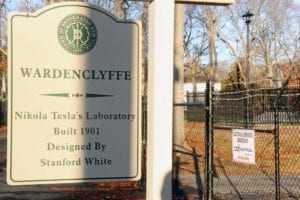
“Not everything submitted to the national registry gets listed, but New York has a very good track record, so hopefully we’ll be hearing a good thing from this one,” said Jennifer Betsworth, a historic preservation
specialist for the state preservation department.
Only a day after the center announced its application, it had more than 6,700 people sign letters in support of the application, according to Alessi, and were sent to the state historic preservation review board.
Betsworth said despite how the property has been modified through the years, it has value as Tesla’s last intact laboratory and has historical significance as the site of some of his last and most ambitious inventions.
“It’s a bit complicated because it’s a building that’s absolutely covered with later additions that aren’t historic, so its value is not necessarily immediately obvious,” said Betsworth. “If this wasn’t the last remaining laboratory related to Tesla, it might not have been eligible. The incredible rarity and significance of this
resource is what it has going for it.”
The science center is currently working to fundraise for the first phase of a project that would turn two buildings on the grounds into exhibition spaces for science education. The fundraising has reached $6 million out of the planned $20 million, according to Alessi. The science center hopes to have the first part of a functioning museum up and running by the end of next year.
























